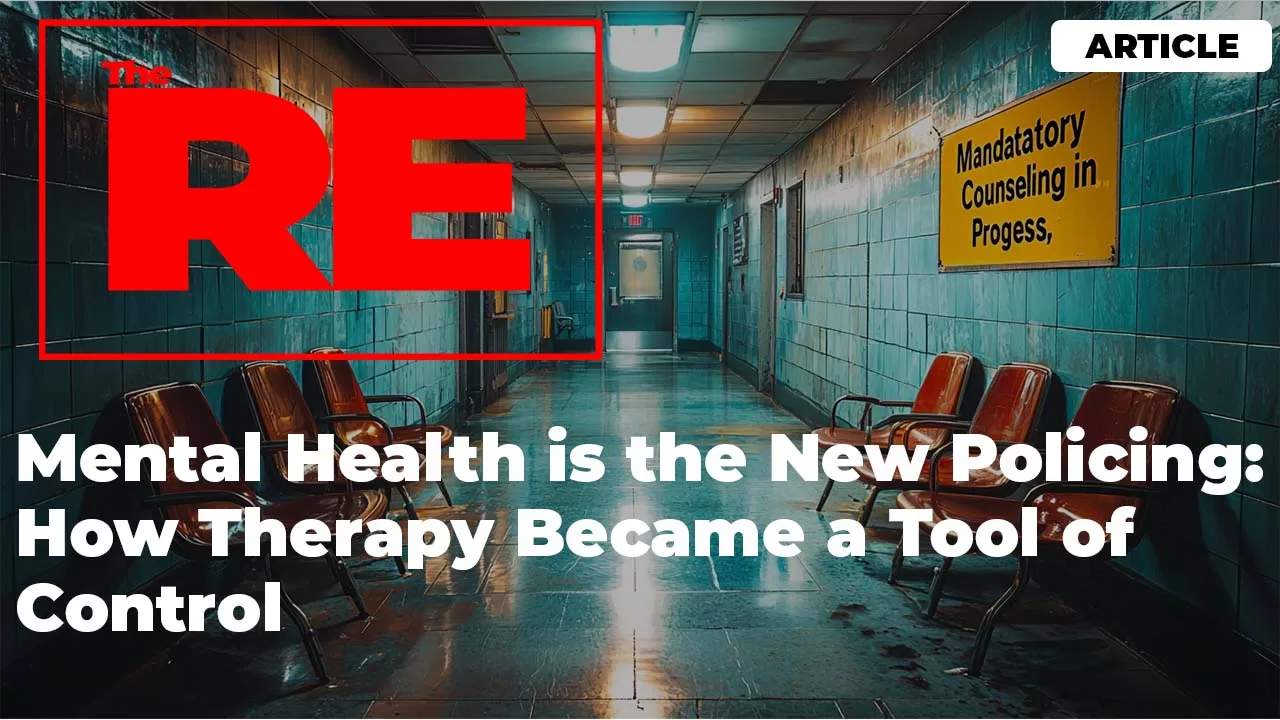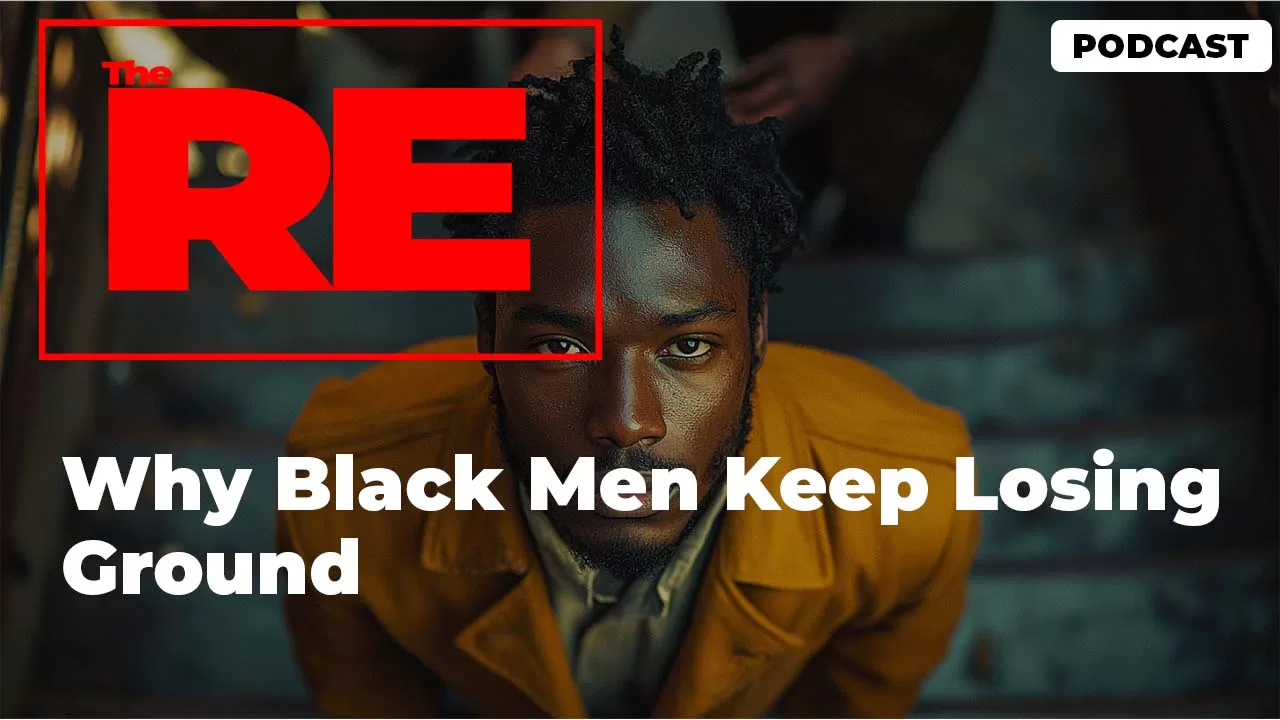The Ripple Effect
-News and Commentary-
How Mandatory Therapy Became a Quiet Tool of Control
- Home
- News and Commentary
- How Mandatory Therapy Became a Quiet Tool of Control

This is not breaking news. We don't report the news. We Unpack it. Explain it. And analyze what it means.
Click this button to add us to your home screen.
We Unpack. You Decide. Stay informed.
One voice. One message. One Goal. Truth
It started with good intentions. Support instead of punishment. Compassion instead of correction. Schools began adding counselors. Workplaces rolled out wellness programs. Courts started pushing therapy instead of jail time. On paper, it looked like progress. A shift toward empathy. But over time, the lines began to blur. Therapy stopped being a choice. It became a requirement. A condition. A checkbox for compliance. And somewhere in that shift, the promise of care turned into a system of control.
Today, therapy is everywhere, but not always in the way people imagine it. It shows up in court mandates, HR policies, school referrals, and case management plans. It is built into sentencing deals, student discipline, and even job retention programs. And while these services can help some people, they also come with rules, deadlines, and reports. Miss an appointment, and it is a violation. Question the process, and it is defiance. You do not just receive care, you are monitored through it. Your progress is not measured by healing. It is measured by compliance.
In schools, students flagged for behavior are often referred to counseling. But the counseling is not always therapeutic. Sometimes it is just a form of surveillance. Notes are taken. Parents are called. Authorities looped in. A child struggling with grief, hunger, or trauma is suddenly under watch, not care. And the interventions come with consequences. In some districts, mental health referrals are tied to discipline records. In others, they become a step toward formal diagnoses that follow students across grade levels. What begins as support quietly builds a file.
The same logic extends into the workplace. Employers now ask employees to attend mental health seminars, complete resilience modules, or meet with wellness advisors. These efforts are branded as supportive. But behind the language of care is a structure that still prioritizes performance. Employees who do not respond well, who burn out, or who push back are flagged as unfit, and labeled replaceable. And because the tools of therapy are now embedded in HR systems, people are less likely to speak freely. They edit their emotions. They manage appearances. They learn that saying the wrong thing could trigger a process they do not control.
In the courts, it is even sharper. Judges frequently assign therapy as part of probation or diversion. It sounds humane, better than jail. But mandated therapy is not the same as voluntary care. You are assigned a provider. You are required to attend. You are evaluated by someone who reports directly to the court. You are not a client. You are a case. And if you question the process, if you struggle to connect with the therapist, or if you miss a session for reasons beyond your control, the system does not ask why. It labels you noncompliant.
I used to think therapy was about healing. That sitting across from someone with training and compassion could help a person sort through pain, confusion, or stress. And for many people, that is still true. But when therapy becomes an arm of institutional management, when it is assigned, monitored, and enforced, it stops being about healing and starts becoming about order. About control. And in those moments, it does not feel like care. It feels like supervision dressed in softer clothes.

The institutional use of therapy has expanded so quietly that most people do not realize how embedded it has become. It is no longer confined to clinics or private offices. It now exists inside school districts, courtrooms, child welfare agencies, and corporate compliance departments. Mental health language is used to justify disciplinary actions, gatekeep opportunities, and frame individuals as either cooperative or resistant. And the line between care and coercion is no longer clear.
In the criminal legal system, mandated therapy is often presented as an alternative to incarceration. But this alternative comes with strings. A person must complete a set number of sessions, attend group classes, follow behavioral plans, and submit to evaluations. These conditions are not designed for emotional healing. They are designed to produce reports. A therapist becomes part of the monitoring process, submitting notes to probation officers or judges. The therapeutic relationship is reshaped into a data stream, feeding back into the same system it is supposed to offset. And if a person cannot keep up, due to work, transportation, mental illness, or trauma, they are penalized. In some jurisdictions, failure to attend mandated therapy can result in probation violations, warrants, or reincarceration.
The same structure appears in schools. A student flagged for defiance, outbursts, or chronic absence may be referred to school-based therapy. But instead of receiving trauma-informed care, that student is often assigned a counselor whose primary job is to report behavior. Counseling notes can be reviewed by school administrators. Parents may be contacted without consent. In some districts, mental health referrals trigger mandatory reporting procedures, placing students under scrutiny instead of support. What begins as a chance to talk becomes a pathway to discipline.
In child welfare cases, mandated therapy is standard. Parents are told to attend anger management, parenting classes, or psychological evaluations. These services are often required to regain custody or even visit their children. But access is uneven. Some families wait weeks or months for an open slot. Some cannot find providers in their language or within their transportation range. Others attend sessions but struggle with the format—group therapy that does not reflect their lived experience or therapists who do not understand their cultural background. None of those factors excuse noncompliance in the eyes of the system. The requirements are rigid. The consequences are real. And the therapists, who should be offering care, become agents of accountability.

Workplaces have adopted a different approach. They frame therapy and wellness as part of employee benefit packages. But when participation becomes monitored, when mood tracking is encouraged, or when mental health becomes a checkbox on performance reviews, it stops being a benefit and becomes a tool. Some companies contract with mental health platforms that track engagement. Others encourage employees to disclose challenges, then use those disclosures to justify disciplinary action or terminations. The boundary between help and surveillance collapses. And employees learn to mask their burnout rather than risk being flagged.
This shift is often justified by appealing to science. Mental health matters. Early intervention helps. But the way institutions implement these ideas often reinforces control rather than compassion. Therapy becomes one more way to categorize people. Compliant or difficult. Improving or failing. Fit or unfit. The original intent—emotional healing—gets lost in translation. What remains is the infrastructure of care without the freedom to opt in or opt out.
And because therapy sounds soft, few people question it. A judge assigning therapy sounds thoughtful. A school offering counseling sounds progressive. A job recommending mental health days sounds supportive. But without autonomy, all of those gestures become mandates. And mandates—especially when tied to power—change the nature of the exchange. You are no longer being helped. You are being watched and managed.

Ask someone who has been through court-mandated therapy how it felt, and you probably will not hear words like healing or clarity. You will hear words like exhausting, mechanical, or performative. People sit in sessions knowing they are being evaluated, not supported. They nod, speak carefully, and say what needs to be said to check the box. There is little space for vulnerability because the risk of being misread is too high. Every sentence feels like it could be used as evidence.
One woman in a diversion program in Pennsylvania described attending group therapy twice a week after a nonviolent offense. The sessions were run by a contracted provider who filed weekly attendance and behavior reports to the court. She said she rarely spoke. Not because she was unwilling, but because she knew any expression of anger or doubt could be interpreted as instability. Her silence was strategic. She wanted to finish the program, not open herself up to more surveillance.
In school settings, students learn quickly what counseling really means. It is not always a space to process. Sometimes it is a place where decisions get made without them. A teenager in Georgia was referred to counseling after showing signs of depression. Within weeks, the counselor contacted school administration about his behavior, and he was moved to an alternative program. He said he felt punished for being honest. His emotional honesty became part of a risk assessment. Instead of receiving support, he was reclassified.
Parents in child welfare cases often describe mandated therapy as a kind of quiet test. They are told to engage fully, but not push back. To express emotions, but not too much. To be vulnerable, but not appear unstable. That balancing act wears people down. One father in Minnesota was ordered to attend parenting classes and weekly therapy after a neglect accusation linked to housing instability. He followed every instruction but felt that nothing he did mattered. The reports continued to describe him as emotionally guarded. When he asked to change therapists, the court denied the request, citing consistency. He completed the program, but the final report still cast doubt on his readiness. His kids remained in foster care.
Even in jobs, the emotional toll is real. People are encouraged to talk about burnout or stress, but only within boundaries that keep the organization comfortable. A project manager in a tech firm described being flagged by HR after a mental health survey revealed she was overwhelmed. She was asked to meet with a wellness advisor. When she disclosed that the workload was part of the issue, she was advised to “adjust expectations” and attend stress reduction workshops. A few months later, she was put on a performance improvement plan. The company claimed it was unrelated, but she saw the connection. Speaking up made her vulnerable. The system offered therapy but not relief.
These stories repeat because the structure is the same. Offer care, tie it to compliance, and treat resistance as failure. The emotional burden lands hardest on those already under pressure—people trying to avoid jail, keep custody, graduate school, or hold onto a paycheck. The system does not make space for real healing because real healing takes time, trust, and safety. Mandated therapy creates none of those. It creates checklists. And once you are on that checklist, it is hard to feel like anything other than a number waiting to be cleared.
This kind of pressure has long-term effects. People stop trusting therapists. Students stop opening up. Parents learn to say what the caseworker wants to hear. Employees stop raising concerns. And slowly, the original goal which was to provide help becomes secondary to the process. Everyone learns how to move through the system. Few ever feel changed by it.

We have reached a point where mental health language is everywhere, but the freedom to actually heal is shrinking. Institutions speak about care, but what they offer is often surveillance in disguise. They tell people to open up, but then penalize what they hear. They frame therapy as a gift, but attach it to conditions. And when care is conditional, it is not really care. It is compliance management. It is behavior tracking. It is soft enforcement with a professional face.
The danger is not just that therapy has been institutionalized. The danger is that its meaning has changed. It no longer exists only to help people process pain or find clarity. It now exists inside systems that need people to behave a certain way. And when therapy becomes part of those systems, it inherits their logic. Deadlines. Metrics. Reports. Risk assessments. You are not a person healing, you are a variable to be managed. And if you do not fit the template then you are a problem to be documented.
This shift should worry all of us. Because the more therapy is used as a condition of freedom, employment, education, or family reunification, the less safe it becomes to be honest. And honesty is the foundation of any real therapeutic relationship. Without it, the process breaks. People stop sharing. They start performing. And the session becomes a stage for meeting requirements rather than a space to be seen. The irony is that a tool meant to reduce harm is now being used to produce quiet, controlled subjects. Not healed people—compliant ones.
What would it look like to reverse this trend? It would start with one core shift: therapy must return to being voluntary. Mandates can be replaced with recommendations. Referrals should come with choice. And evaluations should never be used as tools of punishment. Systems that claim to support people must separate care from compliance. If someone needs help, they should receive it freely, not under threat. And if institutions want trust, they must stop using therapy as a way to report, manage, and sort people.
So what now?
What needs to change? Therapy must be decoupled from disciplinary systems. Care should never be a condition of freedom or survival.
Who is responsible? Judges, school leaders, employers, and agency heads who confuse help with control.
Where does reform begin? In policy, but also in culture—in how we define support and how we treat those who ask for it.
When does it matter most? Before trust is broken and people stop seeking help altogether.
Why does it matter? Because if people associate therapy with punishment, we lose the chance to help them at all. And once that trust is gone, it is hard to rebuild.
This is not breaking news. We don't report the news. We Unpack it. Explain it. And analyze what it means.
Click this button to add us to your home screen.
We Unpack. You Decide. Stay informed.
One voice. One message. One Goal. Truth





 and then
and then